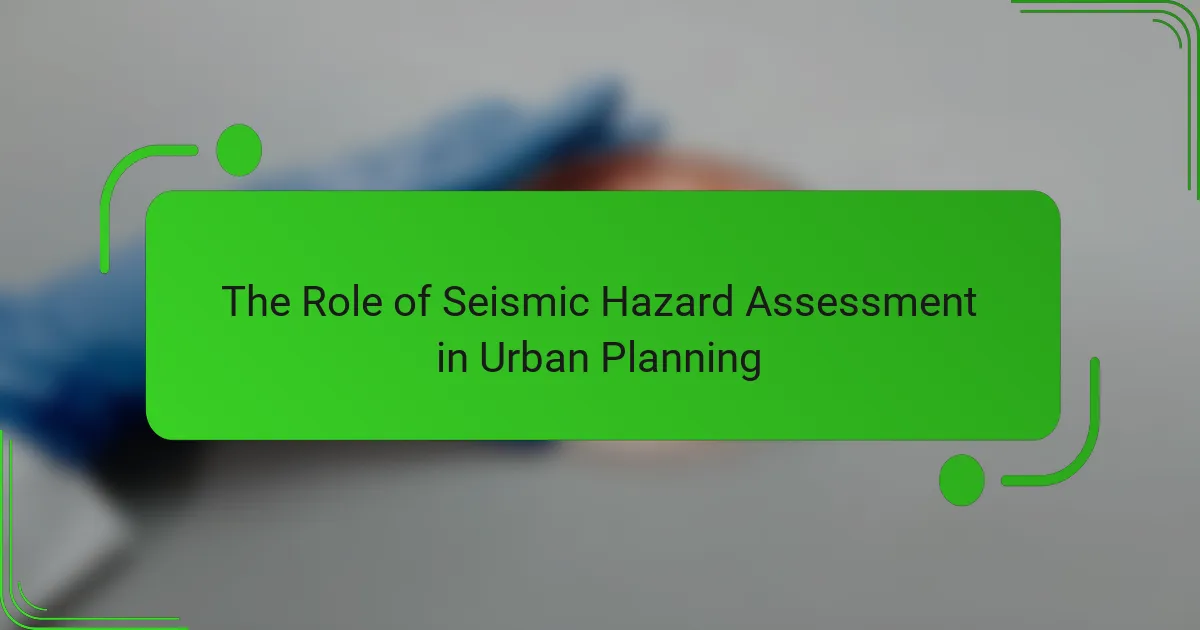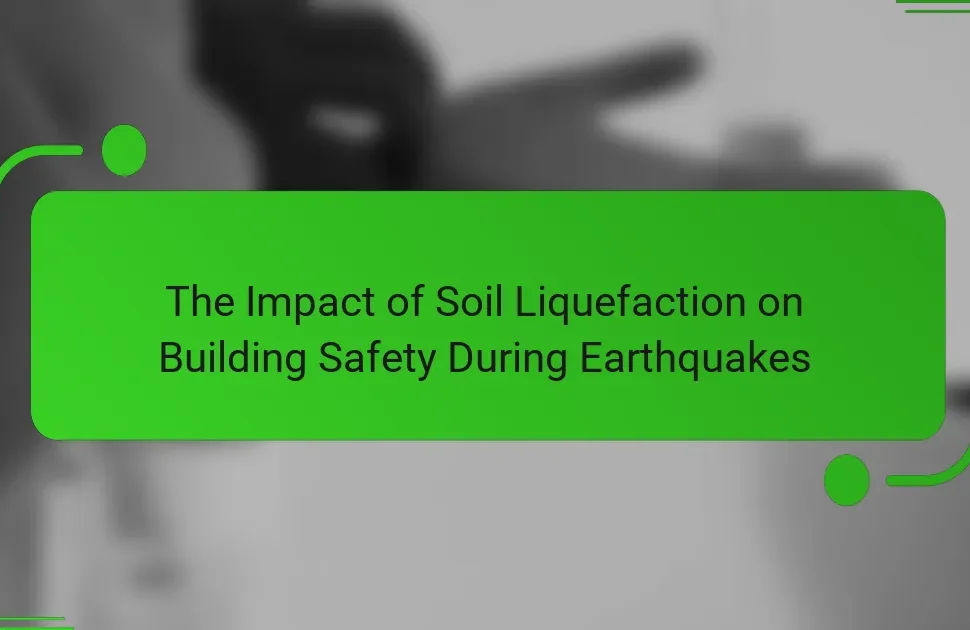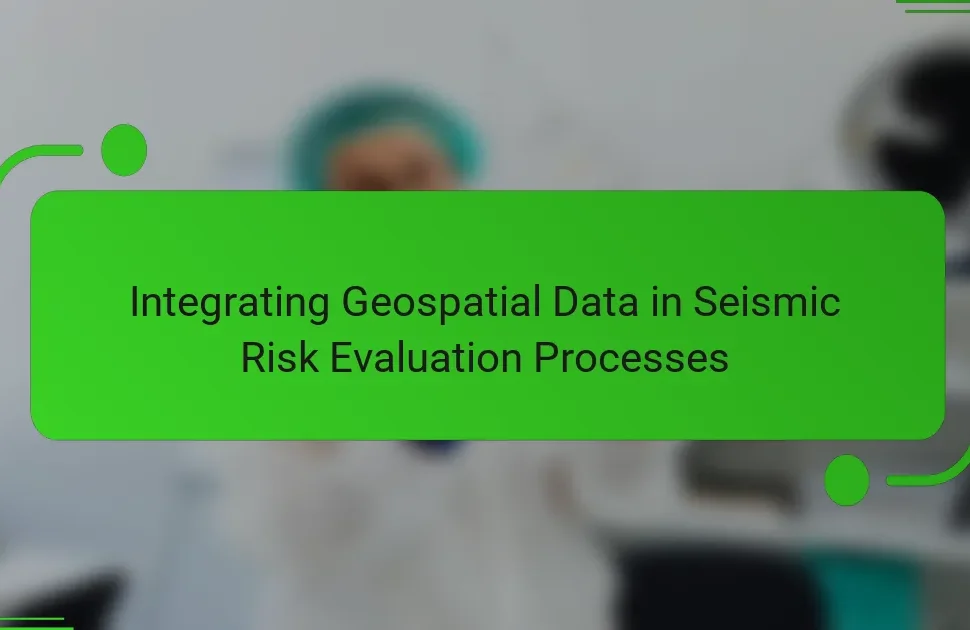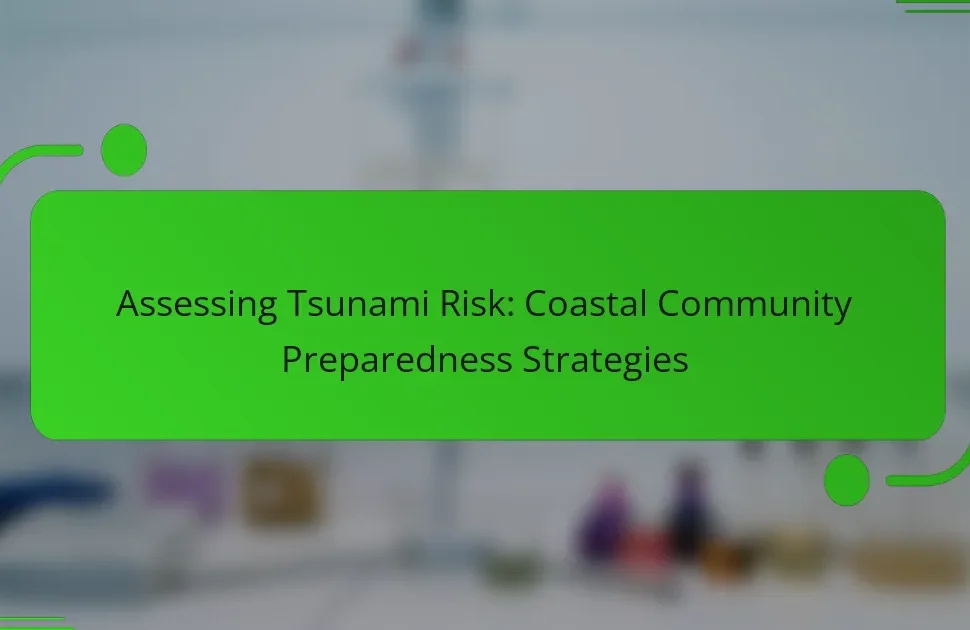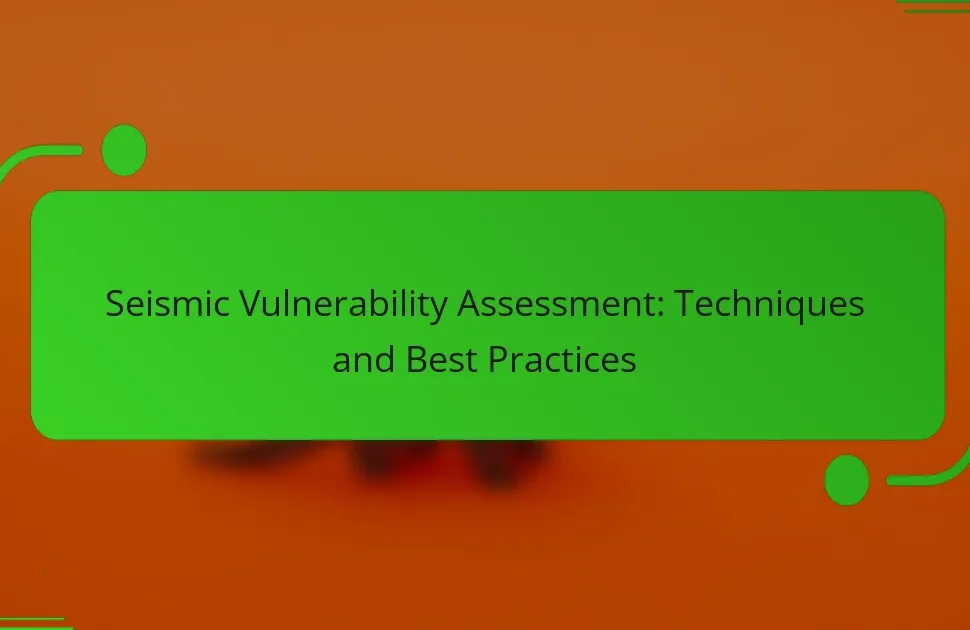Seismic Hazard Assessment is a systematic evaluation process that identifies and quantifies the potential seismic hazards in a specific area, focusing on the likelihood of earthquakes and their impacts. This assessment incorporates historical earthquake data, geological conditions, fault lines, and local building codes to inform urban planning and risk management strategies. Key components include seismic source characterization, ground motion prediction, and site response analysis, which collectively enhance understanding of seismic risks. Effective Seismic Hazard Assessments guide urban planners in developing safer building regulations and land-use policies, ultimately reducing vulnerability and increasing community resilience to earthquakes.
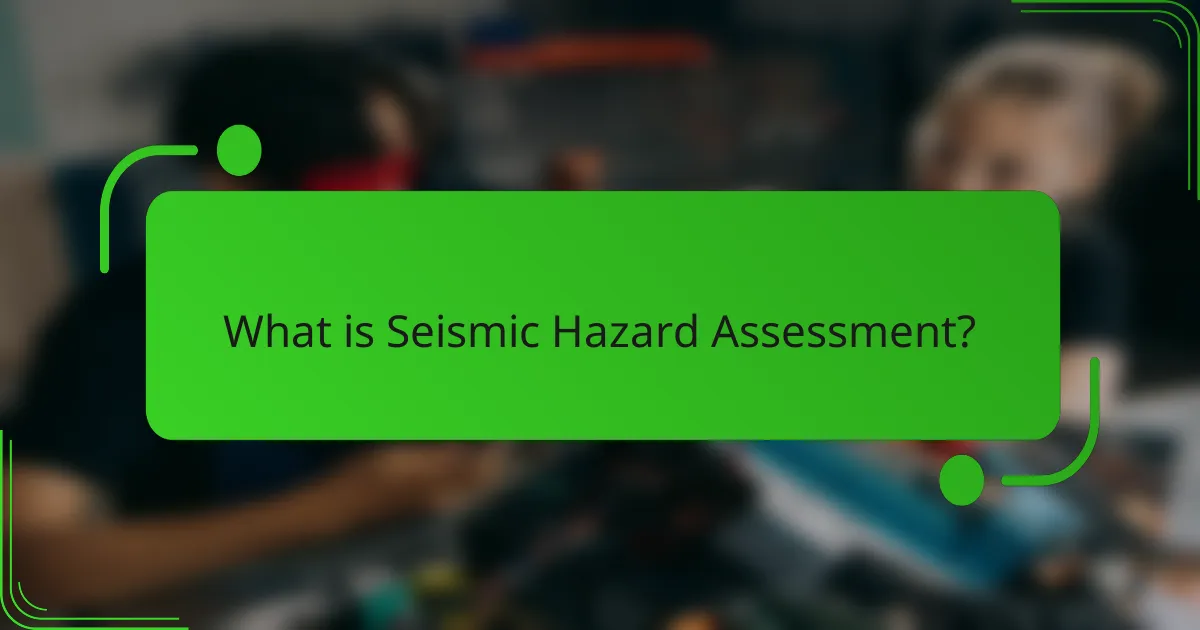
What is Seismic Hazard Assessment?
Seismic Hazard Assessment is a systematic evaluation of the potential seismic hazards in a specific area. It identifies and quantifies the likelihood of earthquakes and their potential impacts. This assessment involves analyzing historical earthquake data, geological conditions, and fault lines. It also considers the local building codes and infrastructure resilience. The results inform urban planning and risk management strategies. Seismic Hazard Assessments help in designing structures to withstand seismic events. According to the U.S. Geological Survey, these assessments are crucial for minimizing earthquake-related damage. They guide decision-makers in developing safer urban environments.
How is Seismic Hazard Assessment conducted?
Seismic Hazard Assessment is conducted through a systematic evaluation of earthquake risks. It involves analyzing historical seismicity data, geological conditions, and potential ground shaking scenarios. Engineers and geologists collaborate to identify fault lines and assess their activity levels. Probabilistic models are often employed to estimate the likelihood of different earthquake magnitudes occurring over a specified timeframe. Ground motion prediction equations are used to estimate the expected intensity of shaking at specific locations. Data from seismic instruments and geological surveys inform these assessments. The results guide urban planning by identifying areas at higher risk for seismic activity. This process is critical for designing buildings and infrastructure that can withstand potential earthquakes.
What methodologies are used in Seismic Hazard Assessment?
Seismic Hazard Assessment employs several methodologies. These include probabilistic seismic hazard assessment (PSHA) and deterministic seismic hazard assessment (DSHA). PSHA evaluates the likelihood of various levels of ground shaking at a site over a specified time frame. It incorporates seismic sources, ground motion prediction equations, and site response analysis. DSHA, on the other hand, focuses on specific earthquake scenarios. It estimates the expected ground shaking from known seismic sources. These methodologies are crucial for understanding potential risks. They inform urban planning by guiding building codes and land-use policies.
What data is required for effective Seismic Hazard Assessment?
Effective Seismic Hazard Assessment requires geological, seismic, and engineering data. Geological data includes information on soil types, geological formations, and fault lines. Seismic data involves historical earthquake records, ground motion parameters, and seismicity maps. Engineering data encompasses building codes, structural designs, and vulnerability assessments. This combination allows for accurate risk evaluation and mitigation strategies. Studies show that thorough data collection enhances the reliability of seismic models and predictions. For instance, the US Geological Survey emphasizes the importance of integrating diverse data sources for effective assessments.
Why is Seismic Hazard Assessment important for urban planning?
Seismic Hazard Assessment is crucial for urban planning as it identifies the potential risks of earthquakes in specific areas. This assessment informs the design and construction of buildings to withstand seismic forces. It also aids in developing emergency response plans and infrastructure resilience. Historical data shows that regions with thorough seismic assessments have lower damage and casualty rates during earthquakes. For instance, cities like San Francisco have implemented strict building codes based on seismic assessments, reducing vulnerability. Ultimately, this proactive approach enhances public safety and minimizes economic losses.
How does Seismic Hazard Assessment influence building codes?
Seismic Hazard Assessment directly influences building codes by determining the level of earthquake risk in a specific area. This assessment evaluates the potential ground shaking, soil conditions, and historical earthquake activity. Based on these evaluations, building codes are updated to include requirements for structural integrity and safety measures. For instance, areas with higher seismic risk may require reinforced structures and specific materials. The International Building Code incorporates findings from seismic assessments to guide local jurisdictions. This ensures that new constructions can withstand expected seismic forces. Historical data shows that regions with stringent seismic codes experience less damage during earthquakes. Thus, Seismic Hazard Assessment is crucial for developing effective building regulations.
What role does Seismic Hazard Assessment play in risk management?
Seismic Hazard Assessment plays a critical role in risk management by identifying and evaluating potential earthquake risks. This assessment helps in understanding the likelihood of seismic events and their potential impacts on infrastructure and communities. Accurate hazard assessments allow for informed decision-making in urban planning and construction practices. They guide the development of building codes and land-use policies to mitigate risks. For instance, regions with high seismic hazards may enforce stricter building regulations to enhance structural resilience. Furthermore, these assessments inform emergency preparedness strategies and response plans. By quantifying risks, Seismic Hazard Assessment supports the allocation of resources for disaster risk reduction. Historical data, such as the 1994 Northridge earthquake, underscores the importance of these assessments in minimizing damage and loss of life.
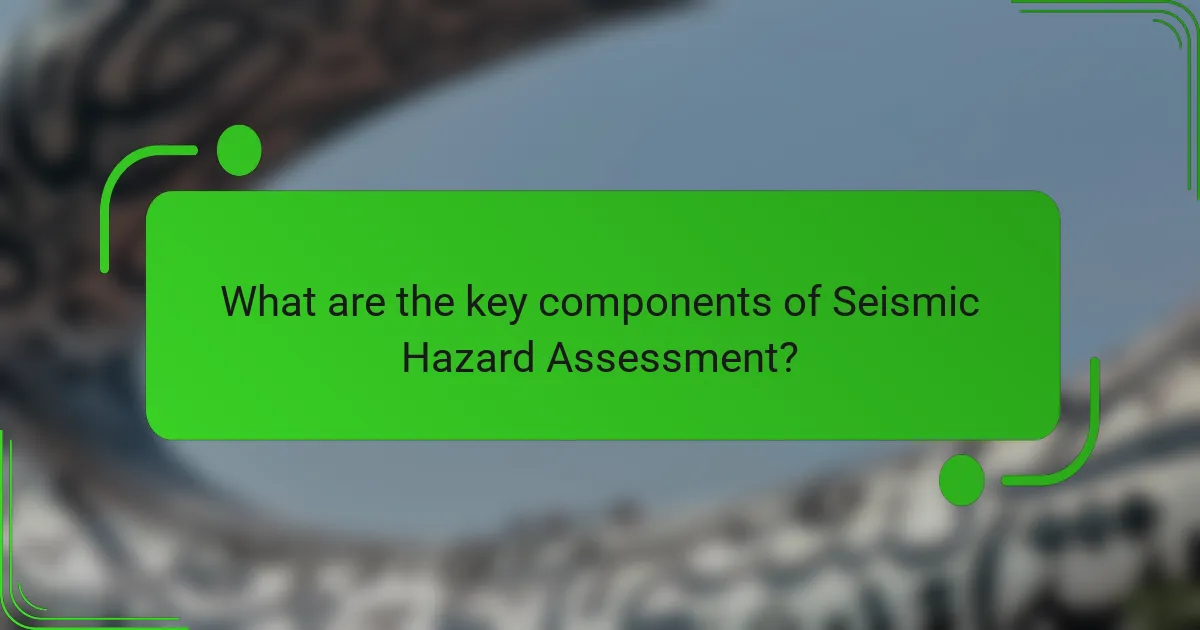
What are the key components of Seismic Hazard Assessment?
The key components of Seismic Hazard Assessment include seismic source characterization, ground motion prediction, and site response analysis. Seismic source characterization identifies potential earthquake sources and their characteristics. Ground motion prediction estimates the expected ground shaking from these sources. Site response analysis evaluates how local geological conditions amplify or modify seismic waves. Together, these components provide a comprehensive understanding of seismic risks. This framework is essential for urban planning, as it informs building codes and land-use policies. Accurate assessments can reduce vulnerability and enhance community resilience to earthquakes.
What types of seismic hazards are assessed?
Seismic hazard assessments typically focus on three main types of hazards: ground shaking, surface rupture, and secondary hazards. Ground shaking refers to the vibrations caused by seismic waves during an earthquake. This is the most common hazard and can lead to structural damage. Surface rupture occurs when the ground breaks along a fault line, which can cause significant displacement and destruction. Secondary hazards include landslides, tsunamis, and liquefaction, which can result from the primary seismic events. Each type of hazard is crucial for understanding the potential impact of earthquakes on urban areas.
How do ground shaking and fault rupture differ in assessment?
Ground shaking and fault rupture differ significantly in assessment methods. Ground shaking assessment evaluates the intensity and duration of seismic waves during an earthquake. This assessment often uses seismic instrumentation and ground motion models. In contrast, fault rupture assessment focuses on the physical displacement along a fault line during an earthquake. It involves geological surveys and historical data analysis. Ground shaking assessments help predict potential building damage across a wide area. Fault rupture assessments are crucial for understanding specific fault behavior and risks. The two assessments complement each other but target different aspects of seismic hazards.
What are secondary hazards associated with seismic events?
Secondary hazards associated with seismic events include landslides, tsunamis, liquefaction, and fires. Landslides can occur when shaking destabilizes slopes. Tsunamis may be triggered by underwater earthquakes. Liquefaction happens when saturated soil loses strength during shaking. Fires can ignite due to damaged gas lines or electrical systems. Historical data shows that the 1906 San Francisco earthquake caused significant fires, exacerbating damage. The 2011 Japan earthquake resulted in a devastating tsunami, highlighting the risks of secondary hazards.
How do geographic and geological factors affect Seismic Hazard Assessment?
Geographic and geological factors significantly influence Seismic Hazard Assessment. Geographic factors include location, population density, and proximity to fault lines. Areas near tectonic plate boundaries are at higher risk for earthquakes. Geological factors encompass soil type, rock formations, and historical seismic activity. Soft soils can amplify seismic waves, increasing damage potential.
The United States Geological Survey (USGS) reports that specific regions, like California, are more seismically active due to their geology. Historical data shows that cities built on unstable ground face greater risks. Assessing these factors allows urban planners to implement safer building codes and land-use policies.
What is the significance of local geology in hazard assessment?
Local geology is crucial in hazard assessment as it influences the type and severity of natural hazards. Geological features determine how seismic waves propagate through the earth. For instance, soft soils can amplify shaking during an earthquake, increasing potential damage. Conversely, hard rock can reduce shaking intensity.
The presence of fault lines is another significant factor. Fault lines indicate areas where earthquakes are likely to occur. Understanding local geology helps identify these faults and assess their risk. Historical data shows that regions with specific geological conditions experience higher earthquake magnitudes.
In addition, local geology affects landslide susceptibility. Areas with steep slopes and loose materials are more prone to landslides during heavy rainfall or seismic events. Therefore, incorporating local geological information enhances the accuracy of hazard assessments.
Overall, local geology provides essential insights for predicting and mitigating risks associated with natural hazards.
How does topography influence seismic risk evaluation?
Topography significantly influences seismic risk evaluation by affecting ground shaking and fault behavior during earthquakes. Variations in elevation, slope, and geological features can amplify seismic waves. For instance, steep slopes may experience increased shaking intensity. Valleys and basins can trap seismic waves, leading to prolonged shaking. Additionally, topography can determine the type of soil present, which also affects seismic response. Areas with soft soils may experience more severe shaking than those with solid bedrock. Studies show that regions with complex topography often face higher seismic risks. This correlation is crucial for urban planning and risk mitigation strategies.

How can urban planners utilize Seismic Hazard Assessment?
Urban planners can utilize Seismic Hazard Assessment to inform land use and building codes. This assessment identifies areas at risk for earthquakes. It provides data on ground shaking, fault lines, and potential liquefaction. Urban planners can use this information to prioritize development in safer zones. They can also design structures to withstand seismic forces. For instance, cities like San Francisco incorporate seismic assessments into their building regulations. This proactive approach reduces vulnerability and enhances community resilience. Studies indicate that effective planning can significantly lower economic losses during seismic events.
What strategies can urban planners implement based on assessment findings?
Urban planners can implement several strategies based on seismic hazard assessment findings. These strategies include updating building codes to enhance structural resilience. They can also prioritize retrofitting existing buildings to withstand seismic events. Zoning regulations may be adjusted to limit high-density development in high-risk areas. Planners can incorporate green spaces to act as buffer zones during seismic activities. Public education campaigns can be developed to inform residents about earthquake preparedness. Infrastructure improvements, such as enhancing roadways for emergency access, are also essential. Collaboration with emergency services can ensure effective response plans are in place. These strategies are vital for minimizing risks and enhancing community safety during seismic events.
How can land-use planning be optimized through Seismic Hazard Assessment?
Seismic Hazard Assessment can optimize land-use planning by identifying areas at risk of earthquakes. This assessment provides crucial data on ground shaking, fault lines, and potential hazards. Planners can use this information to avoid high-risk zones for critical infrastructure. For example, placing hospitals and schools in safer locations reduces potential damage and enhances safety. Additionally, zoning regulations can be adjusted based on seismic risk data. This ensures that buildings meet safety standards appropriate for their location. Studies show that effective land-use planning can significantly mitigate earthquake damage. Implementing these assessments leads to more resilient urban environments.
What are best practices for integrating seismic data into urban design?
Best practices for integrating seismic data into urban design include conducting thorough seismic hazard assessments. These assessments identify potential earthquake risks in specific locations. Urban planners should use this data to inform building codes and zoning regulations. Incorporating seismic data into site selection enhances safety and resilience. Collaboration with geologists and engineers is essential for accurate data interpretation. Additionally, utilizing advanced modeling techniques can predict building performance during seismic events. Regularly updating seismic data ensures that urban designs remain relevant and effective. Implementing these practices can significantly reduce earthquake-related damages and enhance community safety.
What challenges do urban planners face in applying Seismic Hazard Assessment?
Urban planners face several challenges in applying Seismic Hazard Assessment. One major challenge is the variability of seismic data. Different regions have different seismic risks, making it difficult to create standardized assessments. Additionally, the complexity of geological conditions can complicate hazard evaluations. Urban planners must also integrate seismic data into existing urban frameworks, which can be resource-intensive. Limited funding often restricts comprehensive assessments and mitigative measures. Furthermore, communication between planners, engineers, and policymakers can be inconsistent, leading to gaps in understanding. Finally, public awareness and acceptance of seismic risks can hinder the implementation of necessary planning changes. These challenges collectively impact the effectiveness of seismic hazard assessments in urban planning.
How can uncertainty in seismic data impact planning decisions?
Uncertainty in seismic data can significantly impact planning decisions. It affects the accuracy of risk assessments for potential earthquakes. Inaccurate data can lead to inadequate infrastructure planning. This may result in buildings that are not resilient to seismic events. Additionally, uncertainty can influence zoning regulations and land use policies. Planners may struggle to determine safe locations for development. The lack of reliable data can also hinder emergency preparedness strategies. Consequently, communities may be ill-equipped to respond to seismic hazards.
What are the common misconceptions about Seismic Hazard Assessment?
Seismic Hazard Assessment is often misunderstood. One common misconception is that it can predict specific earthquake events. In reality, it estimates the probability of ground shaking in a region over time. Another misconception is that it only applies to high-risk areas. Seismic Hazard Assessments are crucial for all regions, even those with low seismic activity. People also believe that these assessments are static. However, they are updated regularly to reflect new data and research. Finally, some think that the results are solely for engineers. In fact, they inform urban planners, policymakers, and the public about potential risks.
What are the best practices for effective Seismic Hazard Assessment in urban planning?
Effective seismic hazard assessment in urban planning involves several best practices. First, comprehensive data collection is essential. This includes geological, seismological, and historical data on earthquakes in the region. Next, employing advanced modeling techniques is crucial. These techniques help predict potential ground shaking and related hazards.
Collaboration with local authorities and stakeholders enhances the assessment process. Engaging the community ensures that local knowledge and concerns are integrated. Regular updates to the seismic hazard assessment are necessary. This ensures that new data and research findings are incorporated.
Implementing risk mitigation strategies based on the assessment is vital. These strategies may include building codes and land-use planning adjustments. Continuous education and training for urban planners on seismic risks improve preparedness.
According to the United States Geological Survey (USGS), areas with detailed seismic hazard assessments can better prepare for and respond to earthquakes. This highlights the importance of following best practices in urban planning.
Seismic Hazard Assessment is a systematic evaluation of potential earthquake risks in specific areas, focusing on historical data, geological conditions, and infrastructure resilience. This article outlines the methodologies used in conducting these assessments, including probabilistic and deterministic approaches, and emphasizes their importance in urban planning and risk management. Key components such as ground shaking, fault rupture, and secondary hazards are discussed, alongside the influence of local geology and topography on risk evaluation. The article also highlights best practices for integrating seismic data into urban design and the challenges urban planners face in applying these assessments effectively.
